 W
WNippon Animation is a Japanese animation studio. The company is headquartered in Tokyo, with chief offices in the Ginza district of Chūō and production facilities in Tama City.
 W
WThe Swiss Family Robinson: Flone of the Mysterious Island is an anime series produced by Nippon Animation.
 W
WWild Adapter is a Japanese manga series by Kazuya Minekura set in Tokyo and Yokohama, Japan in the mid-1990s. There is also an alternate universe dōjinshi and two episode OVA called Shiritsu Araiso Koto Gakko Seitokai Shikkobu. Wild Adapter was also adapted as a two episode OVA in 2014, which is set in the universe of the manga series.
 W
WAi no Gakko Cuore Monogatari is an anime television series, based on the 1886 novel Cuore, Libro per i Ragazzi by Edmondo de Amicis. It first aired from 3 April to 2 October 1981.
 W
WAngie Girl is a 1977 Japanese animated television series produced by Nippon Animation.
 W
WThe Animated Classics of Japanese Literature is an anime television series which aired on NTV in Japan for 32 episodes from 25 April to 26 December 1986 in the 7–7:30 pm time slot. The series was unusual in that each episode was a stand-alone story based on popular and well known modern Japanese stories. The series was sponsored by Sumitomo Life Insurance.
 W
WAnne of Green Gables is a Japanese animated television series, part of Nippon Animation's World Masterpiece Theater. It was adapted from the 1908 novel, Anne of Green Gables, by Lucy Maud Montgomery. Produced by Nippon Animation in 1979, it was first broadcast on Fuji TV from January 7, 1979, to December 30, 1979. Fifty episodes were produced in total. The first six episodes were later edited into a compilation film released in 2010.
 W
WAntique Bakery is a Japanese manga series written and illustrated by Fumi Yoshinaga. The slice of life series follows the lives of four men who work in a pâtisserie. It was originally serialized in the manga magazine Wings from 1999 to 2001, and collected into four tankōbon volumes published by Shinshokan; a spin-off dōjinshi series has also been produced.
 W
WArabian Nights: Sinbad's Adventures is a 52-episode anime series directed by Fumio Kurokawa and produced by Nippon Animation which was first aired in 1975. The story is based on the children's story "Sinbad the Sailor".
 W
WAround the World with Willy Fog is a Spanish-Japanese animated television adaptation of the 1873 novel Around the World in Eighty Days by Jules Verne produced by Spanish studio BRB Internacional and Televisión Española, with animation by Japanese studio Nippon Animation, that was first broadcast on ANTENNE 2 in 1983 and TVE1 in 1984.
 W
WAttack on Tomorrow was an anime series aired in 1977 in Japan. There were 23 episodes aired at 25 minutes each.
 W
WBannertail: The Story of Gray Squirrel is a Japanese anime series made by Nippon Animation in 1979. It is based on the 1922 children's book Bannertail by Ernest Thompson Seton. It ran for a total of 26 episodes and told the story of Banner, a young orphaned squirrel raised by a kindly mother cat, and his adventures in the forest. It is also known by its German version, entitled Puschel, das Eichhorn. In the Arab and Persian worlds, where the anime succeeded in attracting young viewers and gained much popularity, it is known as Sanjoob (سنجوب) or Sanajeb-el Gaaba. It was also popular in Spain and Latin America under the name Banner & Flappy, it was also popular in Portugal, under the name Bana & Flapi.
 W
WBattle B-Daman is a manga series by Eiji Inuki which ran in CoroCoro Comics by Shogakukan from 2002 to 2005. An anime adaptation was released in January 2004 in Japan, replacing Explosive Shoot Beyblade G Revolution in its 18:00 timeslot. It premiered in the United States in April 2005. Like its predecessor, it is themed around an enhanced version of a traditional children's game – whereas Beyblade was based around spinning tops, Battle B-Daman is a dramatized version of marbles. It is the first show of the B-Daman series to be dubbed in English. In Japan, the second season, titled Battle B-Daman: Fire Spirits! , was superseded by Crash B-Daman, a new series with an all new cast and story.
 W
WBeyblade, known in Japan as Explosive Shoot Beyblade , is a Japanese manga series written and illustrated by Takao Aoki to promote sales of spinning tops called "Beyblades" developed by Takara Tomy. The series focuses on a group of kids who form teams, which battle one another using Beyblades. Originally serialized in Shogakukan's CoroCoro Comic from September 1999 to July 2004, the individual chapters were collected and published in 14 tankōbon volumes and was licensed for English-language release in North America by Viz Media.
 W
WBlocker Gundan 4 Machine Blaster (ブロッカー軍団IVマシーンブラスター) is an anime series aired from 1976 to 1977 in Japan. There are 38 episodes aired at 25 minutes each. It is also known as "Blocker Army IV Machine Blaster", "Blocker Corps IV", "Blocker Army IV", "Blocker Corps", "Machine Blaster" and in Italian as "Astrorobot Contatto Ypsilon".
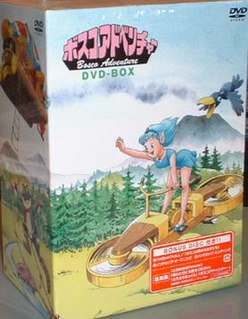 W
WBosco Adventure is an anime television series produced by Nippon Animation, mainly inspired by a book "Storie del Bosco" of the Italian writer Tony Wolf, and other books of this author. The series was very popular in Europe in the late 1980s and early 1990s, and were shown in many European countries, America, and other parts of world like Egypt, Djibouti, Cameroon, Israel and South Korea. They were big success in France, Italy and Japan, but not very famous and was not commercialized in the UK or USA since they were never released in English. The Japanese DVDs were released on July 25, 2003 and the fully remastered Blu-ray discs on July 28, 2017.
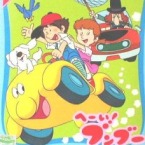 W
WBumpety Boo is an anime children's television series produced by the Nippon Animation company from 1985 to 1986. The series consists of 130 10-minute episodes, distributed as 43 half-hour segments.
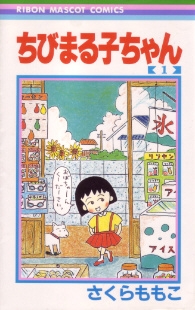 W
WChibi Maruko-chan is a shōjo manga series written and illustrated by Momoko Sakura. The series depicts the simple, everyday life of Momoko Sakura, a young girl everyone calls Maruko, and her family in suburban Japan in the year 1974. Maruko is a troublemaker, and every episode recounts Maruko's trouble and how she and her friends succeed in solving the situation. The series is set in the former of Irie District (入江町), Shimizu, now part of Shizuoka City, birthplace of its author.
 W
WChūka Ichiban! is a Japanese manga series written and illustrated by Etsushi Ogawa. It was serialized in Kodansha's Weekly Shōnen Magazine from October 1995 to May 1999. From 1995 to 1996 it was serialized as Chūka Ichiban!, however, during serialization, the character '真' was added, so from 1997 to 1999, it was serialized as Shin Chūka Ichiban! . The story is centered on a boy whose aim is to become the best chef he could be.
 W
WCoji-Coji is a Japanese manga series by Momoko Sakura which was serialized in the magazine Kimi to Boku from December 1994 to May 1997. The manga was adapted into an anime television series titled Sakura Momoko Theater Coji-Coji which aired from October 4, 1997 until September 25, 1999 on TBS in Japan. It features the titular Coji-Coji, the mysterious "Child of the Universe" with God-like powers. Coji-Coji has demonstrated his ability to erase the universe, fire powerful beams of energy, and live for millennia. Rather than use his powers, Coji-Coji spends his carefree days "eating, sleeping, and playing" in the land of Meruhen with a colorful cast of friends, including a talking snowman and a half fish half bird who can neither fly nor swim.
 W
WCorrector Yui is a Japanese anime television series created by Kia Asamiya. The anime series was produced by Nippon Animation and broadcast on NHK Educational TV from 1999 to 2000. It was licensed for North American release by Viz Media. This series has aired on Cartoon Network outside the United States. In the US, the San Jose market licensed KTEH aired the series in its English-subtitled version as part of its Sunday Late-Prime Sci-Fi programming line-up in the 90s.
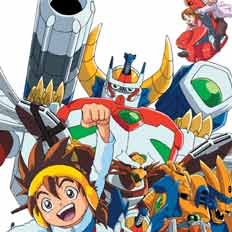 W
WDaigunder is a Japanese anime television series about humans using robots in tournaments. Created by Aeon and Takara and animated by Brain's Base, the studio’s first television production, the series aired on TV Tokyo from April to December 2002. A series of Daigunder toys were produced that could interact with TV screens.
 W
WDogtanian and the Three Muskehounds is a Spanish-Japanese children's animated television series that adapts the classic 1844 Alexandre Dumas story of d'Artagnan and The Three Musketeers, produced by Spanish studio BRB Internacional with animation by Japanese studio Nippon Animation, that was first broadcast on MBS in Japan in 1981–82.
 W
WDokaben is a Japanese baseball manga series written and illustrated by Shinji Mizushima. The original series ran in Akita Shoten Weekly Shōnen Champion magazine from April 24, 1972 to March 27, 1981, but it was followed by several sequel series running until 2018. Chapters of the series were published into 205 tankōbon volumes in total, making it the series with the highest number of volumes. It was also made into an anime by the same name. It was immensely popular in Japan during its original release, and is one of the most popular sports manga of all time.
 W
WDuel Masters is a media franchise consisting of a manga, several anime series, a trading card game and several video games. The original manga, accompanied with his sequels, sold 4.5 million copies in Japan.
 W
WFantastic Children is a Japanese animated television series created by Takashi Nakamura and produced by Nippon Animation. It first aired in Japan across TV Tokyo between October 4, 2004 and March 28, 2005, totaling 26 episodes. There was an extended ending special released only on DVD.
 W
WFisherman Sanpei is a Japanese manga written and illustrated by Takao Yaguchi. The manga was serialised in Kodansha's Weekly Shōnen Magazine from 1973 to 1983. Kodansha has published the manga's 57 bound volumes between July 5, 2003 and October 5, 2005.
 W
WFushigi no Kuni no Alice is an anime adaptation of the 1865 novel Alice's Adventures in Wonderland which ran on the TV Tokyo network and other local stations across Japan from October 10, 1983 to March 26, 1984. The series was a Japanese-German co-production between Nippon Animation, TV Tokyo affiliate station TV Osaka, and Apollo Films. The series consists of 52 episodes, however, only 26 made it to the US.
 W
WFuture Boy Conan is a Japanese post-apocalyptic science fiction anime series, which premiered across Japan on the NHK General TV channel between April 4 and October 31, 1978, on the Tuesday 19:30-20:00 timeslot. The official English title used by Nippon Animation is Conan, The Boy in Future. It is an adaptation of American science-fiction writer Alexander Key's 1970 novel The Incredible Tide.
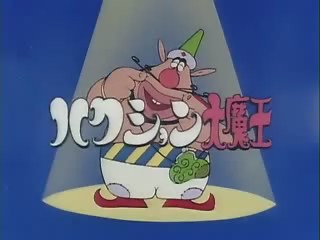 W
WThe Genie Family is an anime television series by Tatsunoko Productions. that originally ran from October 1969 to September 1970, with a total of 52 episodes on Fuji TV. It tells the story of a boy who finds a bottle with a mysterious power - each time its user sneezes or yawns, a genie will come up and must grant the user's wish. A 1992 Saban Entertainment English dub called Bob In A Bottle was shown internationally and a remake was shown in 2020.
 W
WGrimm's Fairy Tale Classics, also known as Grimm Masterpiece Theater in the original version, is a Japanese anime anthology series by Nippon Animation. The episodes are adaptations of a variety of folk and fairy tales, and, despite the name, not limited to Grimm's Fairy Tales.
 W
WHaikara-San: Here Comes Miss Modern , also known as Smart-san or Mademoiselle Anne, is a Japanese shōjo manga series by Waki Yamato. It was serialized by Kodansha in the magazine Shōjo Friend from 1975 to 1977. The title can be literally translated into English as Here Comes Miss Modern, Here Comes Miss High-Collar, or Fashionable Girl Passing By. In 1977, it was awarded the 1st Kodansha Manga Award for shojo.
 W
WHammerin' Harry, known in Japan as Daiku no Gen-san , is a series of platforming video games developed and published by Irem in 1990. The titles were developed and published for the arcades, Famicom, Game Boy, Super Famicom and Sony PSP platforms.
 W
WHungry Heart: Wild Striker is a Japanese football manga and anime series, authored by Captain Tsubasa creator Yōichi Takahashi. The manga series was serialized in Akita Shoten's Weekly Shōnen Champion. The anime series was produced by Nippon Animation and Animax, and premiered in Japan on Animax between September 11, 2002 and September 10, 2003, spanning a total of 52 episodes.
 W
WHunter × Hunter is a Japanese manga series written and illustrated by Yoshihiro Togashi. It has been serialized in Shueisha's Weekly Shōnen Jump since March 1998, although the manga has frequently gone on extended hiatuses since 2006. Its chapters have been collected in 36 tankōbon volumes as of October 2018. The story focuses on a young boy named Gon Freecss who discovers that his father, who left him at a young age, is actually a world-renowned Hunter, a licensed professional who specializes in fantastical pursuits such as locating rare or unidentified animal species, treasure hunting, surveying unexplored enclaves, or hunting down lawless individuals. Gon departs on a journey to become a Hunter and eventually find his father. Along the way, Gon meets various other Hunters and encounters the paranormal.
 W
WHyakko is a Japanese manga created by Haruaki Katō. It started serialization on Flex Comix's free web comic FlexComix Blood on July 12, 2006. An anime adaptation produced by Nippon Animation was first aired in October 2008 in Japan. An OVA was released on October 17, 2009.
 W
WThe Jungle Book is an Italian/Japanese anime adaptation of Rudyard Kipling's original collection of stories, The Jungle Book. It aired in 1989, and consists of a total of 52 episodes.
 W
WLet's Make a Mug Too is a Japanese manga series about Mino ware pottery, set in the Tajimi city of Gifu Prefecture. It has been serialized online by Planet since 2012, and has been collected in thirty-three digital volumes. A second manga series by Osamu Kashiwara has been serialized online via Akita Shoten's Manga Cross website since January 2021. It has been collected in a single tankōbon volume. An anime television series adaptation by Nippon Animation aired from April to June 2021, and a second season aired from October to December 2021.
 W
WLittle Lulu is a comic strip created in 1935 by American author Marjorie Henderson Buell. The character, Lulu Moppet, debuted in The Saturday Evening Post on February 23, 1935, in a single panel, appearing as a flower girl at a wedding and mischievously strewing the aisle with banana peels. Little Lulu replaced Carl Anderson's Henry, which had been picked up for distribution by King Features Syndicate. The Little Lulu panel continued to run weekly in The Saturday Evening Post until December 30, 1944.
 W
WLittle Lulu and Her Little Friends is a Japanese anime television series produced by Nippon Animation, based on Little Lulu comic by US cartoonist Marjorie Henderson Buell (Marge). The series was animated and directed by Fumio Kurokawa.
 W
WLocke the Superman is a manga series created by Yuki Hijiri, which was later adapted into a movie and three OVA releases. The movie was given an obscure video release in the United States by Celebrity Home Entertainment as Locke the Superpower, which was rather heavily edited to 92 minutes, removing violence, nudity and any adult bits. Both it and the OVAs were later licensed and released by Central Park Media under the original name. Ten volumes were published in Poland under the title Locke Superczłowiek.
 W
WLove All Play is a Japanese badminton novel series written by Asami Koseki. Poplar Publishing have published four volumes between May 2011 and March 2014 under their Poplar Bunko Pureful imprint. An anime television series adaptation by Nippon Animation and OLM is scheduled to air from April 2022.
 W
WMama Loves the Poyopoyo-Saurus is a yonkoma manga series by Takako Aonuma which ran in the Fujinseikatsusha child-raising magazine Petit Enfant. The manga was adapted to a 52-episode anime television series which ran on the MBS and TBS networks from September 2, 1995 through August 31, 1996. The series is sometimes called Mama Poyo.
 W
WMaya the Honey Bee is an anime television series produced first by Zuiyo Enterprise and then by Nippon Animation) and ABC of Osaka. The series consisted of 52 episodes and was originally telecast from April 1975 to April 1976 on the NET network, with which ABC is affiliated. Based on the classic children's book The Adventures of Maya the Bee by Waldemar Bonsels, the anime series has become extremely popular in Europe and has been rebroadcast in countries and languages all around the world since its premiere. A film edited from the first few episodes was released on December 15, 1977.
 W
WThe Many Dream Journeys of Meme is a Japanese anime television series created by Nippon Animation. The show originally aired from 1983 to 1985 and was primarily educational. Episodes usually dealt with scientific discoveries and inventions, though there were also a few futuristic and science fiction stories and situations.
 W
WMoero! Top Striker is a Japanese anime series by Nippon Animation, based on overseas football (soccer), set on Genoa and in the world of Italian youth football.
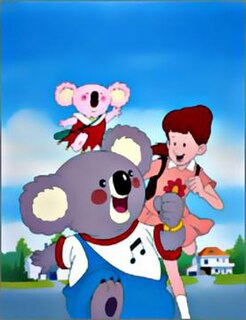 W
WNoozles , also known as The Wondrous Koala Blinky, is a 26-episode anime by Nippon Animation Company that was originally released in Japan in 1984. It depicts the adventures of a 12-year-old girl named Sandy and her koala friends, Blinky and Pinky, who are from the extra-dimensional realm of Koalawalla Land.
 W
WOre wa Teppei is a manga written and illustrated by Tetsuya Chiba. It ran in Weekly Shonen Magazine for nearly eight years and received an anime adaptation in 1977. The series received the Kodansha Cultural Children's Award in 1976.
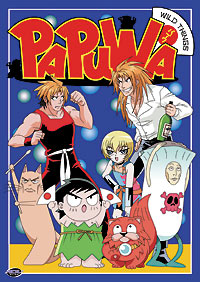 W
WPapuwa is a Japanese manga series written and illustrated by Ami Shibata and adapted into a 26-episode anime television series. The series follows Kotaro who is stranded on an uncharted island inhabited by strange talking animals and has no memory of his past. Papuwa is the sequel to Shibata's 1991 series Nangoku Shōnen Papuwa-kun , serialized in Enix's manga magazine Monthly Shōnen Gangan from 1991 to 1995. That series was adapted into a 42-episode anime television series which aired on TV Asahi from October 1992 to June 1995.
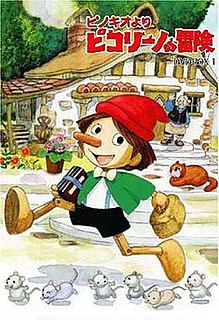 W
WPiccolino no Bōken is a 52 episode anime series by Nippon Animation first aired in 1976 which was created in coproduction with the ZDF and ORF. The story is based on the novel The Adventures of Pinocchio (1881-1883) by Italian author Carlo Collodi.
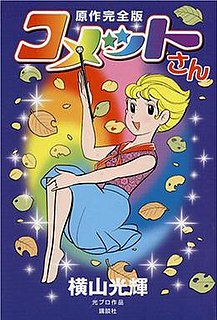 W
WPrincess Comet is a Japanese TV drama and manga series created and illustrated by Mitsuteru Yokoyama, the creator of Tetsujin 28-go and Giant Robo. The TV drama tells the story of Comet, one of the princesses of the Triangle Nebula who came to Earth in search for the missing prince. The manga is first serialized in Shueisha's monthly Margaret magazine from July to November 1967, marking as one of Japan's first Magical girl series produced.
 W
WTonde Burin is a Japanese magical girl manga series written and illustrated by Taeko Ikeda. It was originally serialized in Shogakukan's shōjo magazine Ciao from August 1994 to September 1995, collecting into 3 tankōbon volumes. An anime series based on the manga was created by Nippon Animation and was broadcast on all MBS stations in Japan from September 3, 1994 through August 26, 1995.
 W
WTubby Tompkins, generally referred to as Tubby, is a comic book character created by Marjorie Henderson Buell. The character Thomas "Tubby" Tompkins first appeared in the Little Lulu comic panel in The Saturday Evening Post and went on to appear alongside Lulu in comic books, advertising, and animated cartoons, as well as in his own solo comic book series beginning in 1952.
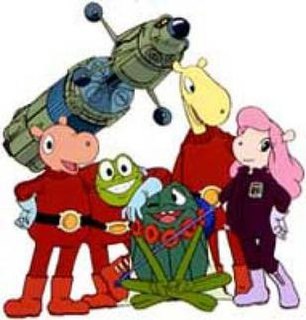 W
WUchūsen Sagittarius is a 77-episode Japanese science fiction anime television series directed by Kazuyoshi Yokota and created by Nippon Animation and TV Asahi. It aired from January 10, 1986 to October 3, 1987. The series is based on comics created by Italian physicist Andrea Romoli.
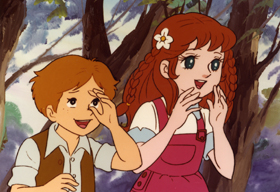 W
WWakakusa no Charlotte is an anime series produced by Nippon Animation Co. Ltd. It was first aired in Japan between October 29, 1977, and May 27, 1978, and is based on an original story by screenwriter Shun'ichi Yukimuro.
 W
WThe Wallflower is a manga series written by Tomoko Hayakawa. The individual chapters have been serialized in Bessatsu Friend since 2000, and in 36 tankōbon volumes in Japan by Kodansha. The series was licensed for an English language release in North America by Del Rey Manga and in Singapore by Chuang Yi, under the name My Fair Lady. The series ended in January 2015 after 36 volumes.
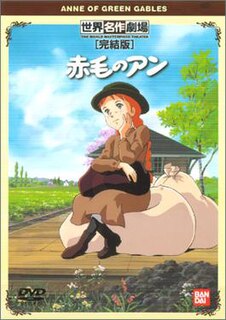 W
WWorld Masterpiece Theater was a Japanese TV anime staple that showcased an animated version of a different classical book or story each year from 19:30 to 20:00 on Sunday on Fuji TV. It originally aired from 1969 to 1997 and from 2007 to 2009. Commonly abbreviated to Meigeki .
 W
WYakyū-kyō no Uta is a Japanese manga series written and illustrated by Shinji Mizushima. It follows Yūki Mizuhara, a young woman who wants to do veterinary medicine at college but instead she became a baseball player. It was originally serialized in the Kodansha's Japanese manga magazine Weekly Shōnen Magazine between 1972 and 1976, and has been adapted into several spin-off manga, a live-action film, an anime television series, an anime film, and a Japanese television drama. In 1973, it received the 4th Kōdansha Literature Culture Award for children's manga.
 W
WYamato Takeru is a 1994 Japanese anime television series loosely related to both the live-action film and legend about a young boy who goes on a great adventure that would grant him great powers and the understanding that his destiny is linked to the world. The series is followed up by the 1995 two-episode original video animation Yamato Takeru: After War.